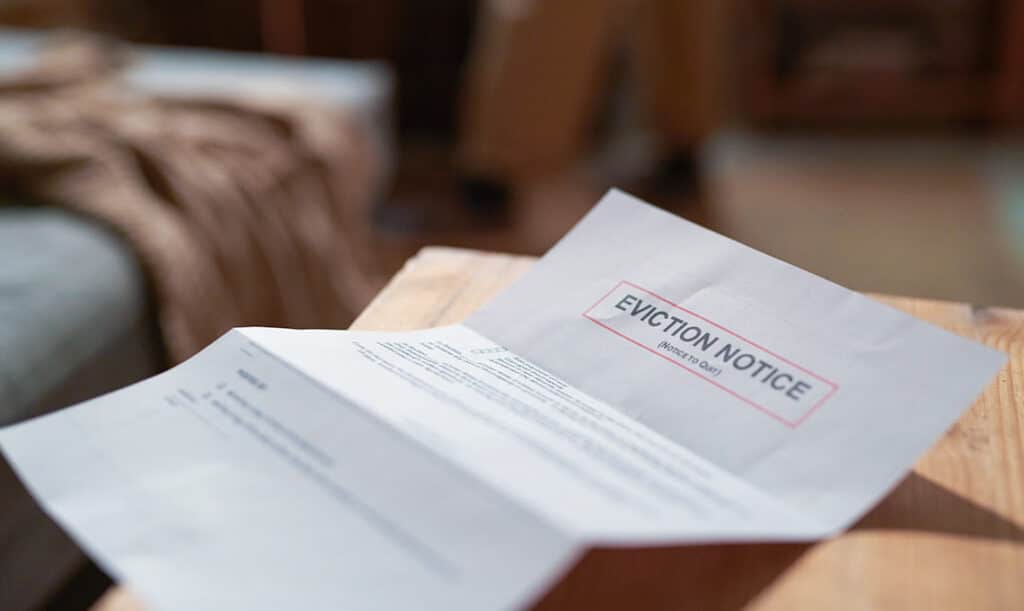
California has one of the shortest adverse possession timelines in the country at just 5 years, which creates some pretty big risks for property owners. If unauthorized occupants learn that they can possibly claim ownership after just five years of continuous possession and tax payments, landlords end up facing some real threats to their investments.
With vacant properties on the rise and cases like Burton v. Sosne in 2019 that show squatters really can succeed in court once they meet the five-year requirement, California’s tenant-friendly laws make it tough for landlords.
Property owners who miss the early warning signs usually end up in expensive legal battles. The bright side is that most squatters fail to meet all the legal requirements. But the ones who really do their homework can build pretty strong cases.
Here are the warning signs to watch for and what actions you can take before unauthorized occupants can build any legal claims to your property.
How California’s Law Protects Your Property
California’s adverse possession law can be scary when people first learn about it. But here’s what matters – the requirements are very strict. Most property disputes never get to this point. The law says that squatters have to meet five exact requirements before they can even try to claim someone’s property.
As a property owner in California, there’s plenty of legal protection on your side. When courts look at these adverse possession claims, they take their time and make sure the squatters followed every requirement completely. If they make even one mistake, their whole claim falls apart, no matter how long they’ve been living on the land.
What people get wrong the most is the part about paying taxes. Squatters have to pay every property tax bill on the property for the entire five years. We’re talking about thousands of dollars here. If they miss even one payment, their whole claim falls apart. This catches most people off guard because they think someone can just move in and wait it out.
They also have to stay on the property non-stop for five full years without any breaks. If they leave for even a weekend trip, they have to start all over again. And if squatters leave for a few months and then come back? They have to start counting from day one all over again. Plus, they need to be living there right out in the open where anyone can see them, not hiding somewhere the owner might not see.

If owners check on their property regularly, they’ll have plenty of opportunities to find someone living there without permission early on. Squatters have to stay there through bad weather, all the seasons, and even when they have personal emergencies. Most people give up when they understand just how hard it really is to live somewhere non-stop like that.
California’s law (specifically Section 325 of the Code of Civil Procedure) says that squatters have to be there “hostile,” which really just means they’re there without your permission. The legal meaning is different from what we usually think of when we hear “hostile.” It doesn’t matter if the squatters are nice people who wave at you when you drive by. In legal terms, “hostile” just means they don’t have your okay to be there.
The last requirement is that they have to be the only ones living there. Squatters can’t share the space with the owner or just use it some of the time. They have to act like they’re the real owners. They have to treat the property like it’s their own home and keep everyone else out, even the real owner.
The Five-Year Tax Timeline
California’s five-year law is what drives everything else that matters here. Once a squatter has been living in your property for five full years without interruption, they can actually file paperwork to take your property. Yes, they can literally become the legal owner. Property owners lose control over homes worth hundreds of thousands of dollars. Courts don’t care about your emotional attachment or investment plans. The law says that if someone’s been living there for five years, you could lose your property.
The Main Street Plaza v. Cartwright case from 2012 shows why timing matters a lot here. The court ruled based on when property taxes were paid during those five years. The squatter who paid taxes the whole time won the case. Here’s where it gets tough for property owners. “Continuous” doesn’t mean the squatter has to chain themselves to your front door. They can take short trips or even go on vacation for a couple of weeks. But if they leave the property for months, that breaks the chain and makes them start over from zero.

Here’s what else you should know – squatters can take two different paths. The standard way means they have to pay all property taxes for five straight years. Color of title claims work differently, though. These happen when someone has a faulty deed or some other document that makes them think they own the property. These color of title cases usually move through the courts faster.
Some squatters actually go after abandoned properties and start paying the taxes on purpose. They know most out-of-town owners won’t notice those payments right away. By the time you realize what’s going on, they might already be a few years into their five-year countdown. Squatters who know what they’re doing will research empty properties through public records. They look for owners who live out of state or people who’ve inherited property they never visit. When you’re not paying attention to your property, these squatters turn that into their legal opportunity.
The money side of all this gets real, too. Property taxes in California can run a few thousand dollars every year. A squatter needs to cover every single tax bill while they’re living there.
The Legal Steps to Remove Squatters
The three-day notice to quit is going to be the first official step when someone wants to get squatters out of their property. This notice needs to be served following California Civil Code Section 1946. It can either be handed directly to the person or just left at the property if they’re not around. The truth is, most squatters won’t bother responding to the notice anyway. After those three days are up and they haven’t left, an unlawful detainer lawsuit needs to be filed in court. This whole process usually takes somewhere between 30 and 45 days to wrap up. Just the filing fees are going to run between $400 and $800, and that’s before even thinking about attorney fees.
All these costs really start to pile up when adding in the rental income lost every month. The property just sits there empty while legal bills keep getting bigger and bigger each month. Most landlords don’t realize just how much money they’re actually going to lose during a long eviction battle.

Here’s where plenty of landlords end up making some really expensive mistakes. You can’t change the locks or shut off the utilities to try to force squatters out. Looking at the 2021 case, Chen v. Berger, shows just how expensive these self-help evictions can get for property owners. Criminal charges could even come into play, even when dealing with people who are obviously trespassing. I know the urge to just take care of it yourself is strong.
Even after winning a court case, the only person who can actually go in and remove the squatters is the sheriff. First, a writ of possession from the court is needed. Then, the sheriff has to schedule a time to come out and do the removal, which usually adds another week or two to the timeline. The sheriff really is the only legal option for physically removing these people. Even winning in court doesn’t mean anything unless you go through the right law enforcement channels to get it done. Property owners who try to skip this part end up having to start the entire process all over again from the beginning.
Squatters have learned exactly how to drag this process out as long as possible. They might file for bankruptcy protection or claim they have a disability to slow everything down. Some of them will just disappear right before the sheriff shows up and then come back a few days later. These stalling moves can add months to the timeline.
There’s new legislation from earlier this year under SB448 that might let property owners ask law enforcement to remove squatters after giving them a 72-hour demand to leave. Proof of ownership and a statement under oath will be needed. But remember, only the police can do the removal. This new law gives much faster options to get people out in straightforward cases. Property owners can skip the long court procedures as long as they have all their paperwork in order.
How to Protect Your Vacant Property
The best way to protect against squatters is to make sure they never get comfortable on the property in the first place. Once someone actually moves in, it’ll probably mean months in court and thousands of dollars on lawyers trying to get them out.
You’ll want to set up an inspection schedule that works for the situation. Properties in urban areas that face more risk should probably get checked every week. For suburban rentals, checking them once a month usually works fine. What matters most is sticking to the schedule because squatters usually watch for patterns and look for properties that seem like nobody’s taking care of them. When someone shows up consistently, it makes the property look cared for. Empty properties are like magnets for experienced squatters who know just what signs to look for. When there’s a steady presence, it messes up their plans and makes them look somewhere else for an easier place to take over.
These days, security options go way beyond putting strong locks on the doors. Cameras with motion sensors can send alerts straight to a phone whenever someone comes near the property. There are also services that monitor properties remotely and can track everything from when doors open to when windows get broken, so there’s no need to drive over there every time something seems concerning. All this technology basically watches the property while other work gets done.

Insurance providers have started to see this as a problem, too. Claims for vacant properties went up 200% between 2020 and 2022, which means insurance providers are now paying much more attention to how well empty properties are protected. Many of them now demand that owners do consistent inspections and have strong security in place to keep coverage. Whether they’ll cover a property depends mostly on what’s being done to stop problems. The people who review claims are now looking at vacant property problems more closely than they used to. If they turn down a claim because security wasn’t strong enough, the owner could end up paying more than what the break-in cost in the first place.
What works best is making the property look like someone lives there, even when nobody does. Lights can be put on timers inside and outside the building so it looks like someone’s home. Keeping the yard tidy and the walkways clean also helps show anyone who could be checking out the property that someone’s taking care of it.
Neighbors can actually be one of the best resources for catching problems early. Taking a few minutes to talk with the people who live next door can basically set up an informal system where they keep an eye on the place and it doesn’t cost anything. Most neighbors are going to spot when something changes or looks wrong before an owner ever would.
New Changes to Property Owner Rights
The legal situation for squatter removal in California has been changing after years of property owners becoming frustrated. Assembly Bill 897 emerged as the biggest reform effort in 2025. This bill tried to create clearer definitions of unlawful squatting and speed up the removal process. The proposed legislation would have required squatters to show proof if they wanted to prevent eviction. Property owners hoped this would get rid of the burden of having to prove someone doesn’t belong on their land. Sadly for landlords, the California Legislature turned down AB 897 in May 2025.
This loss left property owners without the legal relief they desperately needed. Since the bill failed, landlords still have to go through long court battles to remove unwanted occupants. Your monthly mortgage payments keep coming while squatters live in your rental units. Senate Bill 602 represents another attempt at reform. This bill tries to give landlords better tools to handle squatter situations. The details are still being worked out by lawmakers. But it could make some removal procedures easier and faster.

High-profile squatting cases in Los Angeles and San Francisco during 2024 grabbed headlines and sparked public debates. The California Apartment Association and property owner groups have been pushing harder for change in response to these cases. As everyone waits for state-level changes, local cities have decided to take matters into their own hands. Some cities have implemented faster removal procedures when it’s obvious someone is trespassing. These local laws create a patchwork of different regulations across the state.
This patchwork approach creates real confusion for property owners who have properties in multiple jurisdictions. What works in one city might violate ordinances in the next county over. You need to research local laws for each property you manage.
The political tension between tenant advocacy groups and property rights organizations keeps changing with every proposed reform. Each side claims its position protects constitutional due process rights.
Protect Your San Diego Rental Investment
California’s legal environment keeps changing in ways that might seem like a lot to handle. But property owners who stay up-to-date and take action early will be in the strongest position to protect their investment. These recent legislative changes show us that the laws are getting more complicated. So knowing your rights and following the right procedures matters more than ever before. While the new trespassing alert system gives landlords a useful tool that can get police to respond faster, the extended eviction timelines and expanded procedural requirements mean that prevention and quick action are still the best strategies.
That’s why the three-part plan we’ve covered – understanding the law, following the right procedures, and putting prevention measures in place – all work together to help create a solid defense against unauthorized occupancy. Written records and photos become the most valuable allies, and checking properties regularly provides the early warning system needed to handle problems before they turn into legal nightmares. Resources like California Courts self-help centers and local bar association landlord-tenant clinics offer practical help right when it’s needed most.
While California’s tenant-friendly laws do present real challenges, landlords who understand their responsibilities and stay on top of their properties can successfully protect their investment. The five-year timeline that California gives for adverse possession claims may look like there’s plenty of time to handle issues. But the best protection actually happens in those first few days and weeks after finding unauthorized occupants on the property.

At Palm Tree Properties, we understand that protecting an investment needs regular attention to detail and deep knowledge of California’s changing laws. Our direct involvement means we’re always watching over properties, keeping up with legal requirements, and ready to act fast when problems come up.
Ready to see how professional management can protect and maximize investment returns? Get a free rental property evaluation to find out how we can protect property while increasing income.

